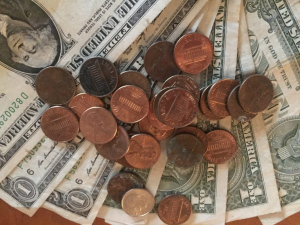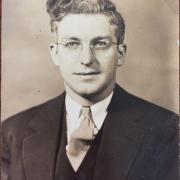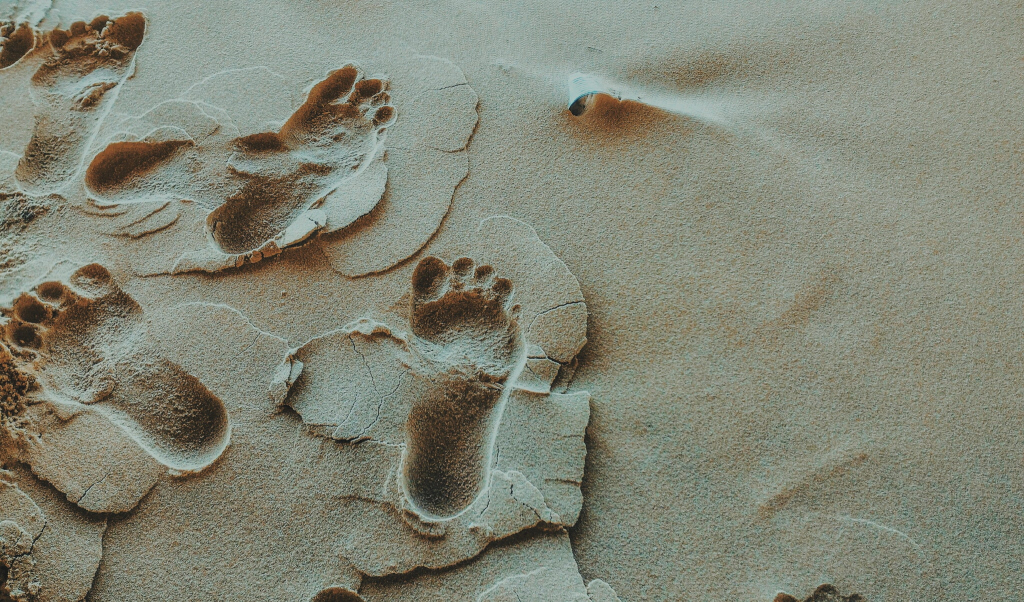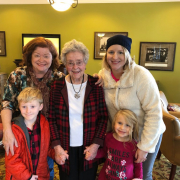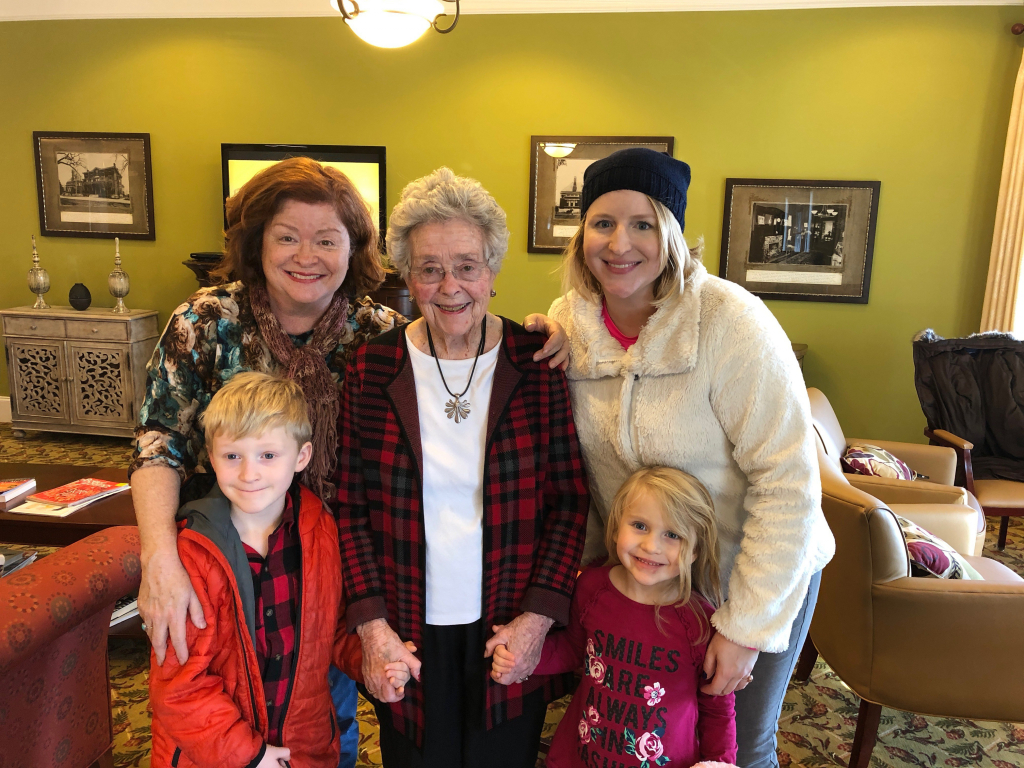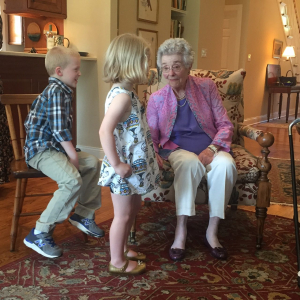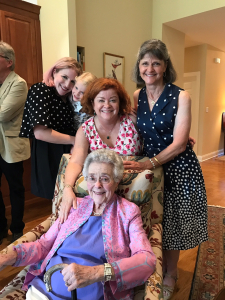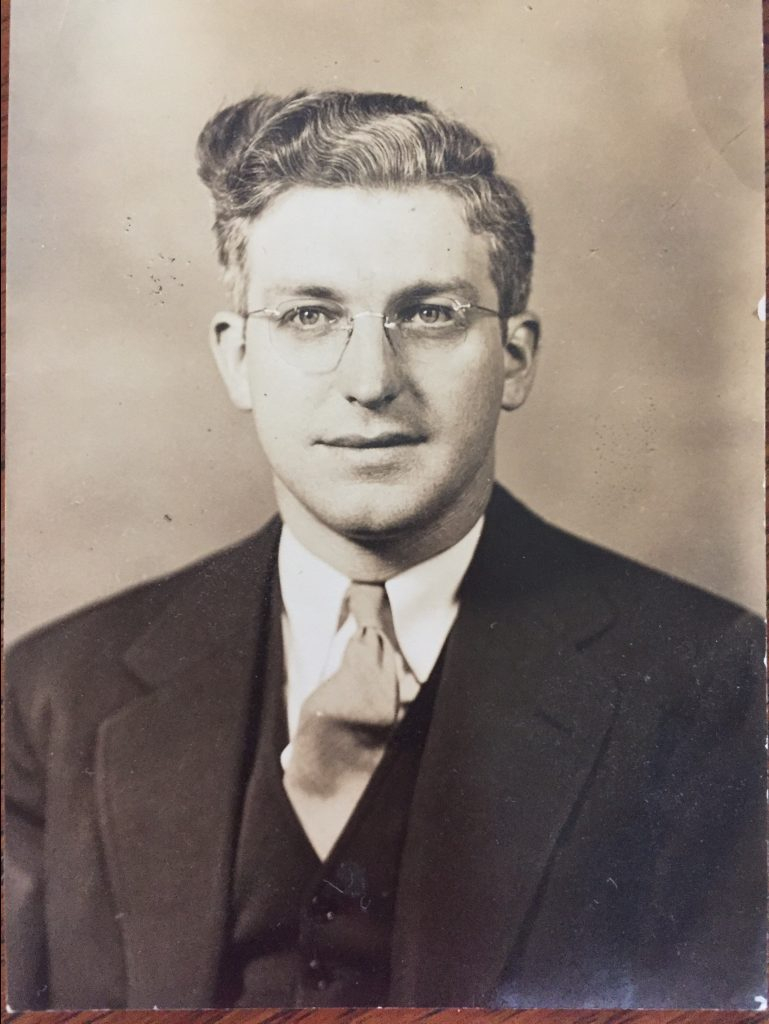
In my family, we tend to keep our history right where we can see it.
That’s not because we are important, or unusually fixated on the past. We do tend to hold on to things and use them, objects that serve a function—here’s a cast-iron skillet that sizzled a half-century ago under the mastery of a cook long gone, or there’s a cherry bed frame that supported slumber for three previous generations. These items stand as living reminders of our predecessors, keeping those souls often in the lexicon of our daily lives. If my grandson asks me what my grandfather was like, I can point to his portrait on my bedroom wall. If a guest drops into the seat of a simple, carved cherry rocker next to my fireplace and comments on its creaking comfort, I can smile and say it belonged to my grandmother, and so forth.
Like all families, we’ve had our share of characters, and the occasional ne’er-do-well. But we know their stories, generally, whether or not they occupy in a place of honor on someone’s portrait wall. They are part of who we are, and who we’ve been.
That’s why a photo that surfaced recently of an attractive, wavy-haired young man with kind eyes and the beginnings of a gentle smile represents such an intriguing puzzle. A small, sepia-toned print of his portrait was preserved, for several decades, most likely, in a special place used often by a couple of prominent women in our family.
Yet we have no idea who he is.

Mystery Man, liberated from an old button box
The little print, in the style popular decades before the advent of color film, measures just three by four inches, with a couple of small water stains and ragged corners. The back side of it, where names and dates are so often inscribed on family shots, is completely blank.
My mother is Chief Curator on behalf of several generations, and she delights in pairing old family items with anyone who might actually admire or use them. Some time back she presented my daughter, a skilled seamstress, with a box of antique buttons that belonged to her own grandmother–Granny, we called this formidable matriarch. Few things slip by my mother’s sharp eyes, but she hadn’t noticed the little portrait tucked inside the ancient button box.
“Look what I found in that button box, Mom,” said my daughter, handing over the old photograph some time later. “Who is this?” Without thinking, I answered, “Looks like Uncle “K”—he had a wild head of wavy hair like that.” My father’s Uncle Kenneth was a distinguished-looking physician born in the 1890s. But, wait–wrong branch of the family. Why would a photo from my father’s side be stashed inside a button box belonging to my maternal great-grandmother? Just to be sure, I e-mailed a digital image of the photo my father’s cousin, who replied promptly. “Dad sure had hair like that,” he agreed, “but it’s not him.” His sister speculated that the photo subject could be a cousin on her grandmother’s side of the family, another interesting possibility, though the route into the button box still makes that seem unlikely.
I sent the digital copy to my mother for examination, wondering if it might be her maternal grandfather, a gentle, well-educated Baptist preacher who served a string of churches in central and Southern Kentucky and died in the 1940s. “Oh, no,” my mother said flatly, shaking her head. “That’s not Granddaddy.”
The hiding place of the little image may provide the most important clue. The button box must tie Mystery Man to my mother’s paternal grandmother, Granny the button collector, or perhaps her daughter, with whom she lived until she died in her early 90s. Both women sewed and crafted prodigiously, were busy and committed volunteers and activists in the ways open to women of their eras. They were strong females who, decades before more options opened to women, forged their owns paths, professionally and personally, in part by circumstance, in part by choice. But neither, as far as we had known, had a man in their lives for their last half-century on this earth.
Or did they?

Formidable Granny with her daughter and youngest child
If there is a woman in our family history who had a tougher go of it than Granny, I can’t name her. Born in Central Kentucky in 1870, Granny was forced in mid-life into an almost unimaginable situations for a wife and mother in the early years of the 20thcentury. Married in her late 20s, she bore six children, five boys and a girl, the last one, her only daughter, arriving when she was 41 years old. Sadly, her husband did not linger to meet his little girl, leaving the family behind, his wife pregnant, his five sons ranging from teens to toddlers, under circumstances never shared or discussed with subsequent generations. The story was simply told like this: He left, and never returned.
Could he be Mystery Man, in the photograph? Could this little illustration be our only visual record of him, more than a hundred years after he abandoned his family? My grandfather said that the children were never allowed to visit him, wherever he was, in the years that followed. The oldest son, 15 when his father vanished and surely inspired by the wrenching dilemma of his mother and siblings with no regular means of support, struck out from his troubled Kentucky home before he was 20. Early military experience landed him in Texas, where he settled and ascended quickly in the booming days of the early Texas oil business. This uncle amassed the only notable fortune that grew anywhere on my family tree, then became a philanthropist later in his life, with university chapels, veterans’ programs, and scholarship programs bearing his name. He supported his mother until she died and showered generosity on others in his family.
Even though she raised a successful and generous son and remained close to all her children, it’s impossible to fathom the heartbreak, the shame, the fear Granny must have felt in those early years, alone as a mother of six. Along with that wide spectrum emotions, did she pine for the man who left her behind after almost 20 years of marriage, maybe hide his photo from her children, underneath all those buttons?
Maybe, but I doubt it. In the language of a later era, Granny became one tough broad, and who wouldn’t, in that situation? Determined to feed her young family, she took up needle and thread and built a business as a seamstress, designing, mending, altering clothes for men and women of her community. That would account for a great button collection. She also apparently saved and stored some lifelong resentment, exhibiting bitter disapproval of the wives of all but one of her boys.
None of that sounds like someone who would hide a small portrait of the departed, a tiny love token of happier times. More likely that she burned any photos or evidence of their life together. Besides, Mystery Man’s countenance bears no resemblance to the five sons Granny’s husband left behind, of whom plenty of photos are extant. Their sharp noses, angular chins, and high brows speak of other genetic ties.
With today’s online research tools, of course, one no longer relies on the memories of our elders or copies of old photos to document who we. All kinds of information, much of it gleaned from archived public records, is available with a very few keystrokes, should the curious care to search. The curious should take care, however, to be prepared for what may be found.
Less than an hour on one ancestry website added a few more elements to the barely faint family image of my errant great-grandfather. Census records when he was younger show that over the years he toiled as a farm laborer, a tobacco warehouse supervisor, and possibly an auto mechanic. There’s a record of a second marriage, just a few months after his daughter was born to his first wife, but no readily accessible evidence of divorce. A draft registration recorded late in World War I, when he was in his forties, listed his occupation as bartender. There’s no way to know for certain, but it is possible he lived out his life as a bigamist. All those details add shadows, brights and darks, to our image of him. What they can’t show us is his face.
Even so, I am resolved that Mystery Man is not him. This is a portrait of a young man, his face unlined by years of hard physical labor, or bad decisions or tragedy. Likely a blonde or redhead with light eyes, he has strong brows, kind eyes, and heavy lips. Perhaps he was embarking on his profession when this picture was taken—a teacher or professor? A young lawyer? You might even speculate he was a bachelor when the camera caught him, with no discerning wife to fulfill her role in those days of supervising his appearance. His tie is askew, his collar slightly untucked, and he needs a barber to trim the wavy mane combed severely back from his forehead.
Long before the mesmerizing ease of ancestry websites made genealogy a virtual sport, as easy as ordering shoes or sheets online, my mother undertook her own family history project. For painstaking hours over a period of years she carefully accumulated photos, news clippings and letters into carefully organized binders, each focused on one major branch of our family. Along with those, she added what no website ever could, in the form of page after page of personal stories about family members, gathered in writing from those who remained to tell them and copied for us, the next generation.
The first volume of this project was a Christmas gift back when I was a frantically busy single mother, too vested in my career and daughter to pay a lot of attention as the volumes began to arrive, over the years. How nice, I thought, predicting the day would come when I’d be really glad to have them. That part, at least, I got right. Interestingly, I think she began assembling them when she was about the age I am now, the season when friends begin to pass on, young grandchildren grow quickly, and one’s appreciation for one’s roots may deepen with reflections on the relentless pilgrimage of time.

Photos from Mom’s family history volumes.
And, of course, there is no sign of Mystery Man in her pages.
A reasonable guess for the identity of Mystery Man may be a fellow whose existence we knew but whose name we did not. My mother’s Auntie, the daughter born to Granny after her husband left her, stayed with her mother the remainder of Granny’s life and never married. Many lonely years later, Auntie reminisced about a missed chance at love with a young man who wanted to join his life to hers. Convinced that her first obligation remained to her mother, Auntie turned down his marriage proposal, later calling it the biggest mistake of her life. Could this little portrait show us the face that she cherished? And maybe tucked carefully away to remember, after he moved on? How long did she think of him, after letting a different life slip through her fingers? Did she hide the photo from herself—was she too attached to destroy it, but too saddened to keep it in ready view? All those answers died with her, more than 30 years ago.
So now Mystery Man resides with us, liberated from his button-box captivity to remind us that probably no one really knows everything about their family, even a close-knit bunch like ours. Part of me hopes we someday discover that he actually was our blood kin. I like his thoughtful eyes and the humility in his expression. If he belongs in the fabric of our family, via whatever unknown thread, we should keep him in remembrance. Whatever the reason he was hidden there, he’s a portrait of bygone days when privacy and discretion were attributes valued and cultivated, when some people really kept only their own counsel and were content to take certain knowledge—call it secrets, if you like– to their graves.
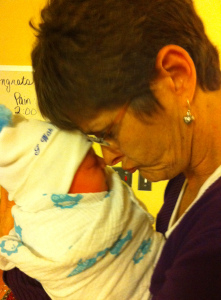

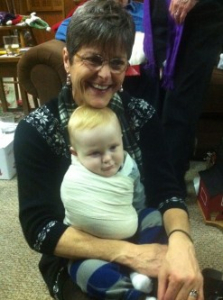


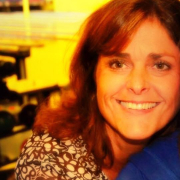
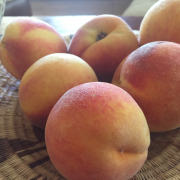
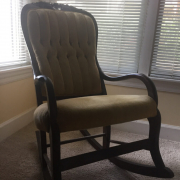
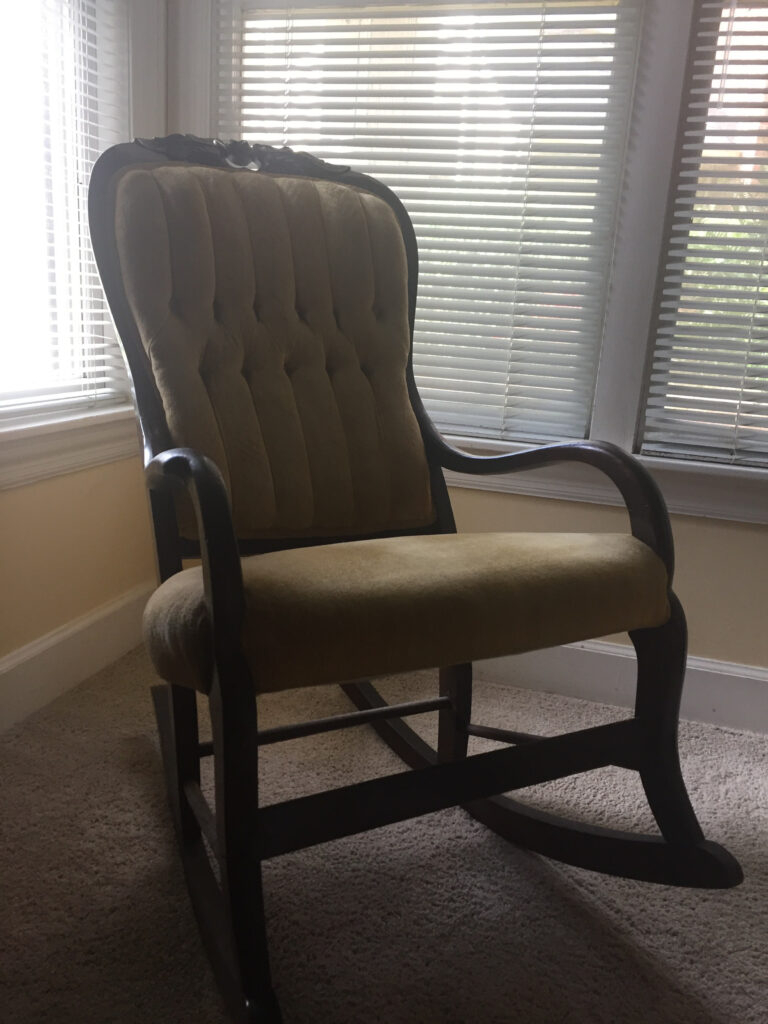
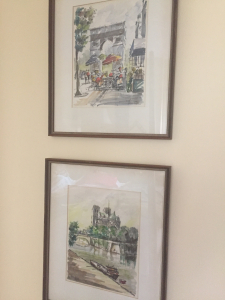 w will turn you into a dumpster-diving, estate-sale-prowling maniac, for the whole premise is that exceptional value lies hidden in the most unlikely places. That is, if you can stay awake long enough to develop such inclinations.
w will turn you into a dumpster-diving, estate-sale-prowling maniac, for the whole premise is that exceptional value lies hidden in the most unlikely places. That is, if you can stay awake long enough to develop such inclinations.
